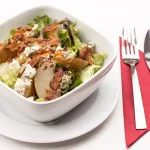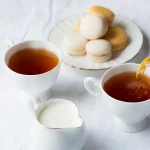The Best Fluffy Pancakes recipe you will fall in love with. Full of tips and tricks to help you make the best pancakes.
If you’ve ever strolled through the vibrant streets of Beijing or watched videos of glossy, fruit-covered skewers crackling with every bite, you’ve likely encountered Tanghulu (糖葫芦) — a beloved Chinese street food that turns fresh fruit into jewel-like candy. Traditionally made with hawthorn berries, Tanghulu has gained global popularity thanks to its irresistible crunchy sugar shell and endless fruit combinations, from strawberries to grapes and beyond.
But what if you could recreate this nostalgic and eye-catching treat in your own kitchen? Whether you’re making Tanghulu for a fun family activity, a unique party snack, or simply to satisfy your sweet tooth, this guide will walk you through every step — from choosing the right ingredients and tools to perfecting the sugar syrup and achieving that signature crackle. Let’s dive into the sweet science behind homemade candied fruit on a stick and learn how to master Tanghulu the foolproof way.
What Is Tanghulu? A Sweet Glimpse into Chinese Street Food Culture
Tanghulu (糖葫芦) is more than just a treat — it’s a cultural symbol of nostalgia, tradition, and joy in Chinese cuisine. Often spotted on the streets of northern China, especially during the colder months, Tanghulu consists of skewered fruits coated in a hardened shell of crystal-clear sugar syrup. Its glossy appearance and satisfying crunch make it a standout among global street snacks.

The Origins of Tanghulu (糖葫芦)
Tanghulu traces its roots back to the Song Dynasty (960–1279 AD), where it was originally made using Chinese hawthorn berries (山楂, shānzhā). These small, tart fruits were believed to aid digestion and balance the sweetness of the hardened sugar coating. Over the centuries, this simple street food grew in popularity across northern China and became a winter favorite — especially around Lunar New Year celebrations and local festivals.
Traditional vs. Modern Versions of Tanghulu
While hawthorn remains a classic, modern Tanghulu has evolved to include a wide array of fruits such as strawberries, grapes, blueberries, tangerines, and even cherry tomatoes. Some versions now even use tropical fruits or cheese-stuffed berries for added flair. Traditionally sold on bamboo skewers and coated with rock sugar syrup, Tanghulu is now adapted with different ingredients, styles, and techniques, especially for home kitchens.
Popular Fruits Used (Hawthorn, Strawberries, Grapes, More)
Tanghulu is celebrated for its versatility. Some of the most commonly used fruits include:
- Hawthorn berries – The tart, traditional choice
- Strawberries – Sweet, juicy, and easy to skewer
- Red or green grapes – Bite-sized and naturally sweet
- Kiwi, pineapple, and blueberries – Popular modern additions
The key is to use fruits with low moisture content or to dry them thoroughly before dipping — this helps the sugar adhere better and creates the signature crunchy candy shell.
Why It’s Loved for Its Crunchy, Sweet Shell
What sets Tanghulu apart from other fruit-based desserts is its delicate, crackling exterior. When the sugar syrup is cooked to the perfect hard crack stage (around 300°F or 150°C), it forms a thin, glass-like coating around the fruit. This contrast between the crisp outer shell and juicy, fresh interior creates a textural experience that’s both playful and satisfying. It’s not just food — it’s a sensory delight.
Essential Ingredients and Tools for Making Tanghulu
Creating perfect Tanghulu at home starts with choosing the right ingredients and having the proper tools on hand. This combination ensures your candied fruit not only tastes amazing but also has that iconic glossy finish and satisfying crunch. Let’s break down what you’ll need to master this classic Chinese treat.
Best Fruits for Tanghulu (Strawberries, Grapes, Kiwi, etc.)
The star of Tanghulu is always the fruit, so picking the right ones is crucial:
- Hawthorn berries are the traditional choice, prized for their tartness and slightly firm texture. If you can find fresh or frozen hawthorn, they bring authentic flavor.
- Strawberries are a popular alternative — juicy, sweet, and easy to skewer.
- Grapes (both red and green) are ideal due to their size and natural sweetness.
- Other fruits like kiwi, blueberries, pineapple chunks, and cherry tomatoes also work well, but it’s important they’re dry and firm to help the sugar coating stick better.
Remember, avoid overly watery fruits like watermelon or peaches, as excess moisture can make the sugar shell sticky or soggy.
The Role of Rock Sugar or Granulated Sugar
The traditional Tanghulu coating comes from rock sugar or pure granulated sugar, which caramelizes to create a crisp candy shell. Rock sugar melts slowly and evenly, giving a smooth, shiny finish. Some home cooks substitute with white granulated sugar or even a blend with corn syrup for a more forgiving texture.
Key tip: Avoid brown sugar or sugars with molasses as they darken the coating and alter the classic transparent look and crispness.
Tools You’ll Need: Skewers, Candy Thermometer, Ice Bath
Having the right tools helps ensure success:
- Bamboo or wooden skewers: Essential for holding and presenting your fruit. Bamboo skewers are traditional and sturdy, perfect for multiple fruit pieces.
- Candy thermometer: A must-have for monitoring sugar syrup temperature. The perfect hard crack stage is around 300°F (150°C), which creates the ideal brittle shell.
- Saucepan: Heavy-bottomed pans are best for even heating and avoiding hot spots.
- Ice bath: A bowl of ice water nearby is helpful to quickly cool your syrup-covered skewers if needed, ensuring the coating hardens fast and stays glossy.
Optional Add-ins: Food Coloring, Flavored Syrups
While classic Tanghulu relies on clear sugar syrup, many home cooks and chefs experiment with:
- Food coloring to tint the syrup, making the skewers visually striking.
- Flavored syrups or extracts like vanilla or citrus for a subtle twist.
- Sesame seeds or chili flakes sprinkled on the syrup before it hardens for texture and flavor variations.
These options can make your homemade Tanghulu not just delicious but also personalized and Instagram-worthy.
Step-by-Step: How to Make Tanghulu at Home
Making Tanghulu might look like a delicate art, but with the right technique and a bit of patience, you can easily master this iconic Chinese candied fruit at home. Below, we break down the process into simple, foolproof steps — from prepping your fruit to achieving that perfect crunchy sugar coating.
Preparing the Fruit for Candy Coating
The first step is to get your fruit ready for dipping:
- Wash your chosen fruits thoroughly and dry them completely — moisture is the enemy of a good candy shell.
- Remove any stems, leaves, or pits to ensure a smooth dipping process.
- Skewer your fruit tightly on bamboo sticks. For smaller fruits like grapes or hawthorn berries, aim for 4-6 pieces per skewer. Larger fruits like strawberries or kiwi slices can be fewer but should still be spaced evenly.
- If the fruit is very juicy, you can lightly pat it with a paper towel or let it air dry for 15-20 minutes to help the sugar stick better.
Making the Perfect Sugar Syrup (With or Without Corn Syrup)
The sugar syrup is the magic behind Tanghulu’s glassy coating:
- Combine granulated sugar (or rock sugar) and a little water in a heavy-bottomed saucepan. If desired, add a small amount of corn syrup to prevent crystallization and give a smoother finish.
- Heat the mixture over medium heat without stirring — gently swirl the pan if needed to help dissolve the sugar evenly.
- Using a candy thermometer, monitor the temperature carefully. You want to reach the hard crack stage, approximately 300°F (150°C). This ensures the syrup will harden into a brittle, crunchy shell. For an accurate and reliable thermometer, you can check out this Ninja Candy Thermometer on Amazon.
- Once the target temperature is reached, remove the pan immediately from heat to avoid burning the syrup.
Reaching the Hard Crack Stage (300°F/150°C)
Understanding the hard crack stage is key to perfect Tanghulu:
- This stage means the sugar syrup, when dropped into cold water, hardens instantly into brittle threads.
- If the syrup is heated too little, the coating will be sticky and soft.
- If heated too much, the syrup can burn and taste bitter, turning dark brown.
- Using a candy thermometer is the most accurate way, but you can also test by dropping a small amount of syrup into cold water to check if it shatters easily.
Dipping and Setting the Fruit for Maximum Crunch
Now for the fun part:
- Quickly dip each skewer of fruit into the hot sugar syrup, rotating to coat evenly with a thin, glossy layer.
- Hold the skewer above the pan for a moment to let excess syrup drip off to avoid clumps.
- Place the coated skewers on a baking sheet lined with parchment paper or lightly oiled surface to cool and harden.
- For faster setting and extra shine, you can briefly dip the coated skewers into an ice bath or place them in the fridge for a few minutes.
- Once hardened, the sugar shell will be crisp and brittle — ready to enjoy!
Tips and Troubleshooting for Perfectly Candied Fruit
Making Tanghulu at home can be incredibly rewarding, but it also comes with a few challenges — especially when working with sugar syrup and fresh fruit. Here are some essential tips and troubleshooting advice to help you avoid common pitfalls and ensure your candied fruit turns out perfectly every time.
Common Issues: Sticky Coating, Cracking, or Cloudy Sugar
- Sticky or tacky coating: This usually means the sugar syrup didn’t reach the hard crack stage or there was too much moisture on the fruit. Make sure to dry your fruit thoroughly before dipping and cook your syrup to around 300°F (150°C). If the coating is sticky after cooling, it may need to be reheated and redipped.
- Cracking or shattering too easily: If your sugar shell is cracking off the fruit too easily or falling apart, the syrup may have overheated and become too brittle. Aim for the precise hard crack temperature and avoid overheating.
- Cloudy or dull sugar coating: This can happen if the syrup crystallizes during cooking or cooling. Avoid stirring the syrup while heating and use a splash of corn syrup or lemon juice to help prevent crystallization. Also, dip the fruit immediately after reaching temperature — letting syrup cool too long can cause a dull finish.
How to Fix Sugar Syrup That Crystallizes
Sugar crystallization is a common problem but can be prevented and fixed:
- Use a clean saucepan to avoid sugar crystals sticking to the sides.
- When heating sugar syrup, brush down the sides of the pan with a wet pastry brush to dissolve any sugar crystals clinging to the edges.
- Adding a small amount of corn syrup or a few drops of lemon juice helps inhibit crystallization.
- If crystallization happens, simply discard the syrup and start over — trying to save crystallized syrup often results in grainy coatings.
Adjusting for Humidity and Temperature
Humidity plays a big role in how your sugar coating sets:
- On humid days, sugar syrup takes longer to harden and can become sticky. If possible, make Tanghulu in a cool, dry environment.
- Store finished Tanghulu in a dry place and eat them soon after making for the best crunch.
- If you live in a very humid climate, try adding a bit more sugar to your syrup or baking the coated skewers briefly in a low oven (around 200°F/90°C) to dry the coating.
Best Practices for Storing and Serving Tanghulu
- Tanghulu is best enjoyed fresh because the sugar shell can soften over time, especially if exposed to moisture.
- If you need to store it, keep it in an airtight container at room temperature, separated by parchment paper to prevent sticking.
- Avoid refrigeration, as condensation can make the sugar coating sticky and cloudy.
- Serve Tanghulu on sticks or skewers for easy handling and an authentic experience.
- For a fun twist, serve with a side of dipping sauces like chocolate or caramel, or sprinkle with crushed nuts or sesame seeds right after dipping.
Creative Variations and Serving Ideas
While traditional Tanghulu showcases the simple beauty of sugar-coated hawthorn berries, the possibilities for creativity with this sweet treat are endless. Experimenting with different fruits, coatings, and presentation styles can turn your Tanghulu into a stunning dessert centerpiece or a fun snack for any occasion. Here are some inspiring ideas to get you started:
Unique Fruit Combinations and Pairings
- Mixed fruit skewers: Combine complementary fruits like strawberries, grapes, kiwi slices, and pineapple chunks on the same skewer. The variety of textures and flavors adds an exciting twist to the classic.
- Tropical tanghulu: Use exotic fruits such as mango cubes, lychee, or passion fruit balls for a vibrant, tropical flair.
- Berry medley: Mix blueberries, raspberries, and blackberries for a colorful, antioxidant-rich version.
- Citrus zest: Add segments of mandarin orange or blood orange to introduce a refreshing, tangy note.
Flavored Sugar Coatings and Toppings
- Infused syrups: Add subtle flavor by infusing your sugar syrup with ingredients like vanilla bean, cinnamon sticks, or star anise during heating. These aromas lend an elegant twist to the candy shell.
- Colored coatings: Use natural food coloring or edible glitter to give your Tanghulu a festive look—perfect for holidays or celebrations.
- Nutty crunch: Sprinkle crushed pistachios, sesame seeds, or toasted coconut flakes onto the sugar coating immediately after dipping for extra texture and flavor.
- Spicy kick: For adventurous eaters, dust the still-wet syrup with chili powder or cayenne pepper to balance the sweetness with a little heat.
Serving Suggestions for Parties and Gifting
- Elegant displays: Arrange Tanghulu skewers upright in a decorative vase filled with beads or colored sugar crystals for a stunning party centerpiece.
- Gift packaging: Wrap individual skewers in cellophane bags tied with colorful ribbons for a thoughtful homemade gift during festivals, birthdays, or holidays.
- Interactive dessert stations: Set up a Tanghulu DIY station where guests can select their fruits, coatings, and toppings, making the experience fun and personalized.
- Pairing with beverages: Serve alongside hot tea (like jasmine or green tea) or a chilled sparkling drink to complement the sweetness and cleanse the palate.
Innovative Twists Beyond Traditional Tanghulu
- Chocolate-dipped tanghulu: After the sugar coating hardens, drizzle or dip the fruit in dark or white chocolate for a decadent double coating.
- Tanghulu bites: Use smaller fruit pieces on mini skewers or toothpicks for bite-sized treats perfect for appetizers or kids’ snacks.
- Frozen tanghulu: After coating, briefly freeze the skewers for a refreshing cold snack, especially popular in warmer climates.






[…] a sweet treat to go with these lunch ideas? Check out this quick and delicious recipe on Fast Prep Kitchen for a fun and tasty addition to your […]